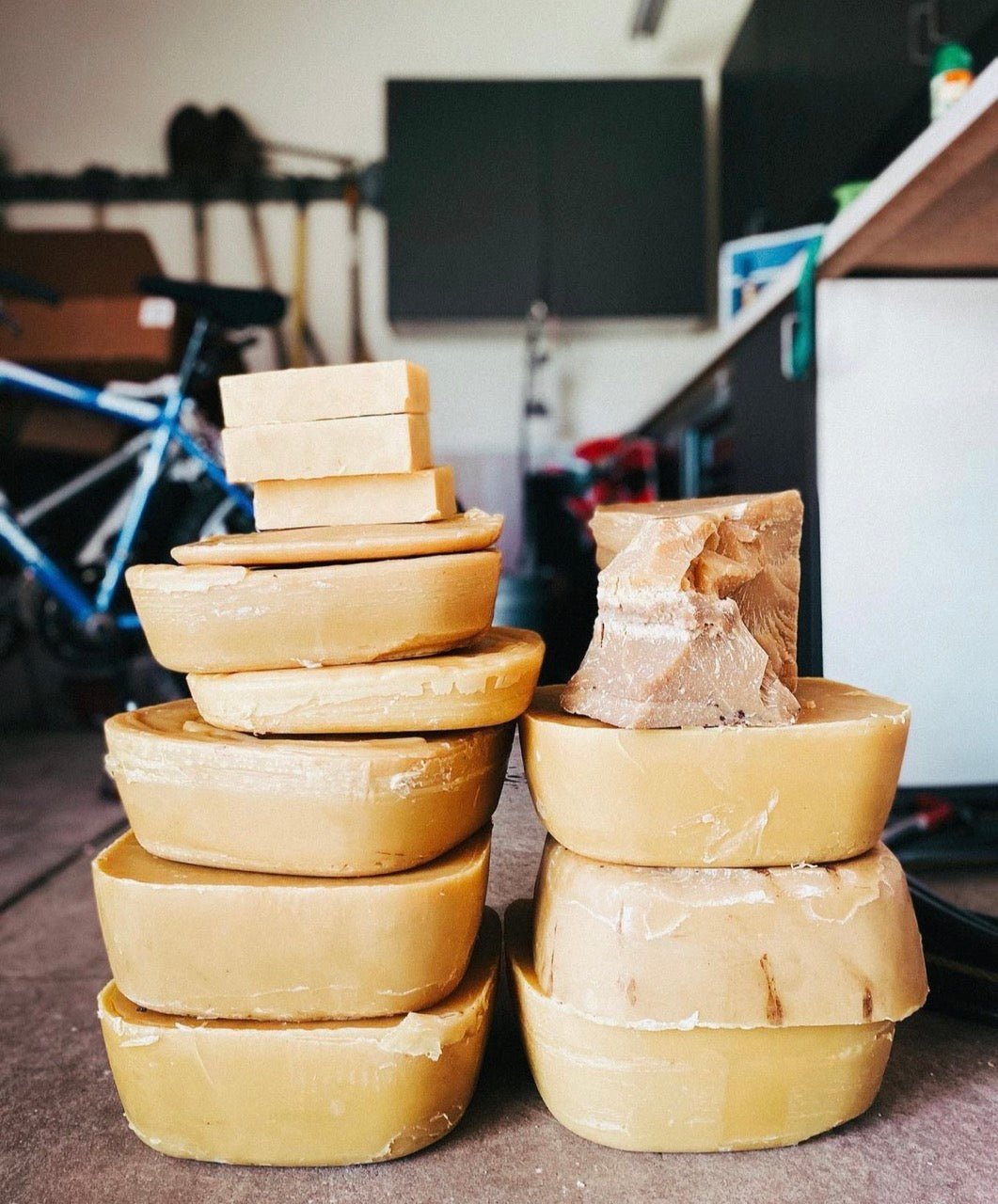
Everything to know about beeswax candles
Share
Beeswax air purifying properties
Beeswax can act as a natural air-purifier. When beeswax is burned it released negative ions which can attach to positive ions that are found in many air pollutants like dust, pollen, order, and toxins neutralizing them.
This process can help alleviate allergies and asthma. These negative ions make beeswax candles the best at neutralizing odors while other candles simply mask odor with fragrance. Therefore, beeswax is considered the cleanest burning candles, while soy candles are also relatively clean burning, they do not have the same purifying and order cleansing properties.
While paraffin wax creates both benzene and toluene which are both known carcinogens and release soot and other toxins in the air which can trigger asthma and other breathing conditions.
Longest burning wax
Beeswax is the longest burning wax of any of the waxes used to make candles, it begins melting at 140 degrees Fahrenheit (60 degrees Celsius), whereas soy wax begins to melt at 120 degrees Fahrenheit (48.9 degrees Celsius).
While paraffin, the most common and worst of candles has a melting point of 99 degrees Fahrenheit (37.2 degrees Celsius). Simply, the higher the melting point the longer the burn time the candle will be if the candle sizes are the same.
Additionally, beeswax creates the warmest light closest to the sun. This longer burn-time is one of the reasons beeswax is considered the highest-quality wax and makes the best candles.
Eco-friendly and infinitely sustainable
For the environmentalist out there (which we proudly are) is beeswax sustainable? Yes, but we can tell you exactly why and how it stacks up to the sustainability of other waxes like soy and paraffin wax.
First on the hit list, we have beef with paraffin wax. Paraffin wax is the most used wax and the easiest to work with, the wax is also called petroleum wax since it is derived from petroleum. Almost all the big store candles, like Yankee Candle, uses this harmful paraffin wax.
Next on the list is soy wax, this wax is far better than paraffin wax. The wax is biodegradable and sustainable but is most soybeans are GMO (genetically modified organisms) and are grown on fields that are sprayed by pesticides. These pesticides are harmful to our treasured and dying bee population that is so crucial to our environment.
Beeswax is entirely sustainable; it is a natural bi-product bees produce. If there are bees, there will be beeswax so when you buy beeswax candles you also support beekeepers who work to maintain their bee populations in order to maintain the production of honey.
Does beeswax harm the bees?
No! In fact, harvesting old beeswax from the hive can help them be more productive as they prefer new beeswax to lay their eggs in. Harvesting this beeswax is not harmful to the bees themselves.
Some beekeepers cull their hives and buy new bees after winter as it is more costly to feed the bees than it is to buy new bees, we however only work with local beekeepers who protect their bee colonies. Therefore, the bees that were hard at work to make your last candle will be protected in order to preserve the environment, continue pollination, and continue producing beeswax and honey.
Since our beeswax supplier is local to our state of Michigan in order to protect them from brutal Michigan winters, they opt the send their bees to warmer weather so they can continue to do their thing all year-round and comeback home when the weather is nice. Our beekeeping partners truly care about their bees and protect them even if it costs more.
Without the bees they have no business, so their entire business model is based on protecting and growing the bee colonies they have rather than killing them off and buying new ones the next season, therefore, when you choose our beeswax candles you are directly supporting our local beeswax colonies.
The summary
Beeswax is the best wax that can be used in candles, but those benefits come with a cost. Beeswax is far more expensive than soy and is almost incomparable to the cost of cheap crude oil derivative of paraffin wax.
It is also much harder to add fragrance to beeswax candles when compared to soy and paraffin. Candle companies interested in having the highest margins are going to opt for the cheaper materials without the benefits of beeswax. Companies that care about sustainability while wanting to save money will usually opt for soy wax.
To put it simply you can think of these three waxes like this, beeswax is good, soy is neutral, and paraffin is negative and harmful.
Want to learn why we add coconut oil? Click here
If you want to leave why our candles are phthalate-free Click here



